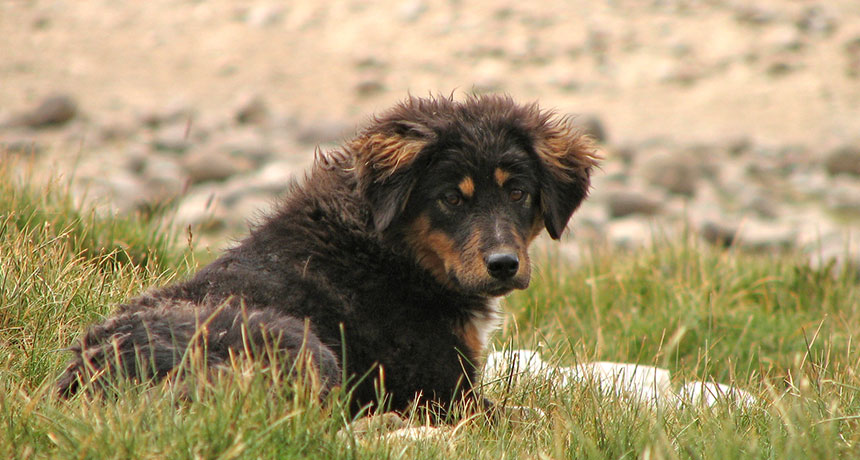Nature has a dog problem
Free-roaming dogs can spread disease and kill wildlife

India has more than 30 million stray dogs, which can be a danger to people and wildlife alike.
Karunaker Rayker/Flickr (CC-BY 3.0)
- More than 2 years ago
Man’s best friend can sometimes be wildlife’s worst enemy. Free-roaming dogs, both feral and owned animals that run loose, spread rabies and other diseases, kill wild animals and have caused extinctions. They’re even to blame for thousands of human deaths every year. And yet dogs get little of the hatred aimed at feral cats — and only a fraction of the attention from scientists.
Perhaps that needs to change.
A new study places the domestic dog among the four invasive mammals that have caused the most extinctions of native species. Cats and rodents are the worst, responsible for 63 and 75 extinctions, respectively — mostly birds. Dogs have caused around 10 extinctions and threaten another 156 species, Tim Doherty of Deakin University in Australia and colleagues report September 16 in the Proceedings of the National Academy of Sciences.
So while dogs aren’t as bad as cats on the extinction scale, their impact shouldn’t be ignored, especially when you look more closely at the harm they can do. Though that can be a little difficult, Izabela Wierzbowska of Jagiellonian University in Krakow, Poland, and colleagues note in a study published in the September Biological Conservation. There is a “paucity of scientific studies on the ecological impact of domestic dogs,” especially at the national level, they note.
The researchers tried to rectify that by tallying up the wildlife killed by free-roaming dogs in Poland (a nation roughly the size of New Mexico). Wierzbowska and her team took advantage of Poland’s strict management of its rural lands, which are divvied up into 49 hunting districts where the mortality of game species must be reported every year. This meant the researchers could count kills by free-roaming dogs, both feral and owned.
From 2002 to 2011, the records showed that dogs killed an average of 33,000 wild animals each year, plus 280 or so livestock. That’s probably an underestimate, though, since it is unlikely that hunting district managers recorded every kill made by a stray dog.
Unlike cats, which tend to go for small prey, the dogs often took on much larger animals, such as deer and boar. But the dogs also killed plenty of smaller animals, including brown hare (which accounted for half of their kills), badgers and grouse. Dogs also killed animals protected from human hunters, such as the European hamster and the black grouse.
The scale of the killing was dwarfed by that done legally by humans, so it’s unlikely the dogs are going to drive Polish deer to extinction anytime soon. But there are plenty of other ways that dogs can harm wildlife, the researchers note. They carry and spread pathogens such as rabies and canine distemper virus (which threatens Siberian tigers, among other animals). Their very presence can change the behavior of wild animals, and not for the better. They compete with native wildlife for prey. And when they kill livestock, local wolves may take the blame, increasing wolf-human conflict.
Free-roaming dogs are also a huge threat to people. In India, where millions of dogs roam the streets, more than 20,000 people die each year from rabies. And even in the United States, free-roaming dogs can be a huge problem in cities, and especially in poor areas. I once heard a frightening story: A woman I met in the waiting room of the vet hospital explained that she was there after having to choose whether to save her child or her pet from a free-roaming dog that attacked them. She whisked her kid to safety on top of a car and hoped that the vet could save the pet dog she had to leave to take the brunt of the attack.
So before we start exterminating the world’s feral cat population (good luck with that), perhaps we should turn some of that energy on figuring out what to do about the dogs. Or even the rodents — since they’re the biggest problem of them all when it comes to driving other species extinct.






